

Welcome to the Tec Corp Stone Inc. Shop! Explore our extensive selection of premium stones, from elegant marble to durable granite. Whether you’re planning a renovation or a new build, find the perfect materials to elevate your space. Shop now for high-quality stones and bring your design dreams to life.
As an igneous rock, granite is very hard and has been the first choice in human construction projects for years due to its classic appearance and high resistance. This stone is very beautiful and the granite countertop attracts everyone’s attention. Also, the use of chemicals and cleaners does not stain granite and adds to its shine. We offer a wide range of granite stones, including: Alaska white slab, Belvedere leather slab, Black pearl leather slab, Black pearl slab, Cambrian black slab, Giallo ornamentale original premium slab, Giallo ornamentale regulier slab, New cambrian black leather slab, River blue slab, Royal white slab, Titanium leather slab and Titanium slab. If you have considered this stone for your project, we provide a list of its various models, by clicking on each model you can get the relevant information.
Showing all 12 results
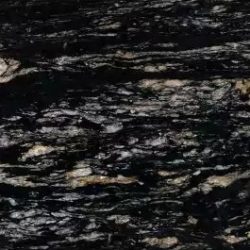
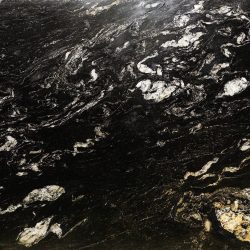
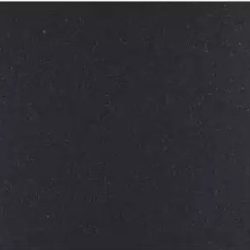


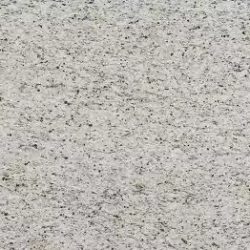
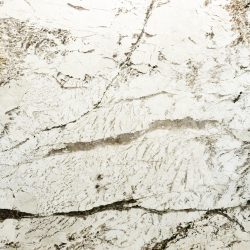
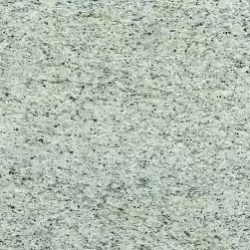

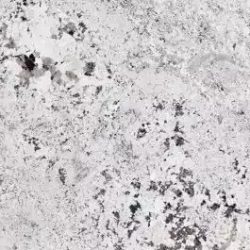

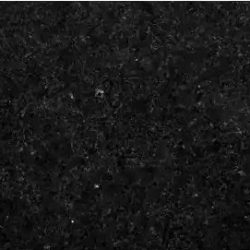
Granite is one of the most widely used and recognized natural stones in the world, known for its exceptional durability, aesthetic appeal, and versatility. It is an igneous rock that forms deep within the Earth’s crust from the slow crystallization of molten magma. Over millions of years, intense heat and pressure cause minerals such as quartz, feldspar, and mica to bond together, creating granite’s unique and varied patterns.
Granite has been used in construction and architecture for thousands of years. The ancient Egyptians were among the first to use granite extensively, particularly in the construction of pyramids, temples, and statues. The Red Pyramid and the Great Pyramid of Giza feature granite blocks, showcasing its durability and resistance to erosion.
During the Roman Empire, granite was a favored material for columns, monuments, and public buildings, many of which still stand today. In medieval Europe, granite was commonly used in cathedrals, bridges, and castles due to its strength and resistance to the elements.
By the 19th and 20th centuries, advancements in quarrying and cutting technologies made granite more accessible. It became a top choice for monuments, memorials, and public structures, such as the Mount Rushmore National Memorial in the United States.
Today, granite is a premium material used in countertops, flooring, wall cladding, and landscaping. It is particularly popular in Canada, where high-quality granite is quarried locally and widely used in residential and commercial projects.
With its rich history and natural beauty, granite continues to be a symbol of strength, luxury, and timeless elegance in architecture and interior design.
Granite is a natural igneous rock known for its exceptional hardness, durability, and unique mineral composition. These properties make it one of the most sought-after materials for construction and interior design. Below, we explore its physical and chemical characteristics that contribute to its widespread use.
Hardness and Durability
Granite ranks 6–7 on the Mohs hardness scale, making it highly resistant to scratches and wear. This property is why granite is often used for kitchen countertops, flooring, and monuments that endure heavy use.
Density and Porosity
Granite has a density of 2.6–2.8 g/cm³, making it a dense and heavy stone. While it is less porous than some other natural stones, it still requires sealing to prevent moisture absorption and staining.
Heat and Fire Resistance
Granite is highly heat resistant, capable of withstanding temperatures over 1,200°F (650°C). This makes it an excellent material for fireplace surrounds and kitchen countertops, where exposure to heat is common.
Compression Strength
Granite has a compression strength of approximately 200 MPa, meaning it can withstand significant weight and pressure. This makes it ideal for load-bearing structures like bridges and columns.
Unique Aesthetic Qualities
Granite is available in a wide range of colors and patterns, depending on its mineral composition. Some of the most popular granite colors include black, white, gray, red, blue, and green, often with speckles or veins of quartz and feldspar.
Mineral Composition
Granite is primarily composed of:
Chemical Resistance
Granite is resistant to most household chemicals, but acidic substances (like lemon juice, vinegar, and wine) can cause minor etching over time. Proper sealing helps prevent damage from acids.
Weather and Water Resistance
Granite is highly resistant to weathering, making it suitable for outdoor applications like paving, cladding, and sculptures. However, some varieties absorb more water than others, requiring occasional sealing.
Granite’s exceptional hardness, durability, heat resistance, and aesthetic appeal make it one of the most versatile natural stones. Its physical and chemical stability ensure that it remains a long-lasting and reliable choice for construction, interior design, and decorative applications. Whether used for kitchen countertops, monuments, or building facades, granite continues to be a preferred material worldwide.
Granite is a highly versatile and durable natural stone, making it a top choice for both residential and commercial projects. Thanks to its resistance to heat, scratches, and moisture, it is widely used in interior design and construction. Below are some of the most popular applications of granite.
Durable and Heat Resistant – Granite countertops are one of the most popular choices for kitchens because they can withstand heavy use, high temperatures, and impact.
Aesthetic Appeal – Available in a wide variety of colors and patterns, granite adds a luxurious and natural look to any kitchen.
Easy to Maintain – When properly sealed, granite countertops are stain-resistant and easy to clean with mild soap and water.
Many homeowners pair granite countertops with a matching or contrasting backsplash, creating a cohesive and stylish kitchen design.
Water and Moisture Resistant – Granite is an excellent choice for bathroom vanities, sinks, and shower walls as it repels moisture when properly sealed.
Enhances Luxury – Granite’s natural veining and polished finish add a high-end, spa-like feel to bathrooms.
Long-Lasting – Unlike other materials that degrade over time, granite maintains its elegance and structural integrity for decades.
A popular trend in modern homes is using granite slabs for full-wall shower enclosures, providing a seamless, sleek, and easy-to-clean surface.
Ideal for High-Traffic Areas – Granite flooring is highly durable and withstands scratches, heavy foot traffic, and moisture, making it perfect for entrance halls, living rooms, and commercial spaces.
Variety of Finishes – Available in polished, honed, flamed, and leathered finishes, granite floors can be customized for both modern and classic interiors.
Non-Slip Options – Flamed and textured granite finishes provide extra grip, making it safe for staircases and outdoor walkways.
Granite staircases are widely used in luxury homes, hotels, and commercial buildings, offering a combination of strength and timeless beauty.
Elegant Wall Covering – Granite slabs or tiles are used for feature walls in living rooms, lobbies, and commercial buildings, adding depth and sophistication to interior spaces.
Fire-Resistant – Since granite is naturally heat-resistant, it is an excellent material for fireplace surrounds and hearths.
Indoor and Outdoor Use – Granite cladding is used for both interior accent walls and exterior facades, providing a modern yet natural aesthetic.
Granite’s rich textures and patterns create stunning focal points in homes, offices, and hotels.
Weather and UV Resistant – Unlike some materials that fade over time, granite maintains its color and structural integrity even with prolonged exposure to sun, rain, and snow.
Perfect for Landscaping – Granite is widely used for garden pathways, patios, retaining walls, and pool decks, offering a durable and slip-resistant surface.
Increases Property Value – Incorporating granite in outdoor spaces enhances curb appeal and overall property value.
Granite pavers and slabs are preferred for luxury outdoor designs, as they provide a natural yet sophisticated look.
Symbol of Strength and Durability – Due to its weather resistance and long lifespan, granite has been used for centuries in monuments and memorials worldwide.
Commonly Used in Public Spaces – Many government buildings, bridges, and historical landmarks feature granite due to its timeless appeal and structural strength.
Popular in Canada – Canadian quarries produce high-quality granite, which is frequently used in city squares, public art, and historical sites.
Some of the world’s most famous landmarks, such as Mount Rushmore and the Vietnam Veterans Memorial, are made of granite, showcasing its architectural significance.
Granite is one of the most versatile and durable materials in the world, with applications ranging from kitchen countertops to historical monuments. Whether used indoors or outdoors, its natural beauty, strength, and low maintenance make it an excellent choice for both residential and commercial projects.
Granite is one of the most popular natural stones used in residential and commercial construction, offering a blend of beauty, durability, and functionality. However, like any material, it comes with both advantages and disadvantages. Below is a detailed analysis of granite’s pros and cons to help homeowners and builders make an informed decision.
Highly Scratch-Resistant – With a Mohs hardness rating of 6–7, granite is stronger than most natural stones, making it an excellent choice for high-traffic areas, countertops, and flooring.
Impact-Resistant – Unlike softer stones , granite can withstand heavy use, sharp objects, and accidental drops without chipping or cracking easily.
Withstands High Temperatures – Granite is naturally heat-resistant, making it ideal for kitchen countertops, fireplace surrounds, and outdoor applications.
No Damage from Hot Pans – Unlike synthetic materials or laminate surfaces, granite won’t scorch or warp when exposed to hot cookware.
One-of-a-Kind Patterns – Each granite slab is completely unique, featuring natural color variations, veining, and speckles that make every installation special.
Wide Range of Colors – Available in black, white, gray, red, green, blue, and gold tones, granite can complement both modern and classic interiors.
Non-Porous with Sealant – When properly sealed, granite resists stains from liquids like wine, coffee, and oil, making it a great choice for kitchen and bathroom surfaces.
Prevents Bacteria Growth – A sealed granite surface is hygienic and easy to clean, reducing the risk of mold and bacteria buildup.
Increases Home Value – Granite countertops and flooring are considered premium materials, which can increase a property’s resale value and appeal to buyers.
Lasts a Lifetime – With proper care, granite can last decades without losing its beauty or functionality.
Weather-Resistant – Unlike engineered stones, granite is naturally resistant to rain, UV rays, and temperature fluctuations, making it perfect for patios, outdoor kitchens, and exterior cladding.
Low-Maintenance in Outdoor Settings – Unlike wood or concrete, granite does not fade, warp, or deteriorate when exposed to the elements.
Porous Nature – Although less porous than marble, untreated granite can absorb liquids, oils, and bacteria, leading to stains and discoloration.
Needs Regular Sealing – To maintain its stain resistance, granite countertops should be sealed every 1–2 years, depending on usage.
Expensive Compared to Some Alternatives – High-quality granite countertops can range from $50 to $150 per square foot, making it pricier than materials like laminate or solid surface countertops.
Costly Installation – Due to its weight and cutting requirements, granite requires professional installation, adding to the overall expense.
Requires Strong Cabinetry – Granite is one of the heaviest natural stones, meaning countertops require reinforced cabinets to support the weight.
Not DIY-Friendly – Unlike lighter materials, granite cannot be easily cut or installed without specialized tools and expertise.
Brittle Edges – While granite is extremely hard, its edges and corners can chip if hit with a heavy object, especially in thinner slabs.
Difficult to Repair – Unlike quartz, damaged granite cannot be easily repaired, and replacing an entire slab can be costly.
Cannot Be Easily Molded – Unlike engineered stone (e.g., quartz), granite cannot be shaped into seamless or intricate designs without visible joints.
Natural Color Variations – While unique, granite’s natural variations mean that matching two slabs perfectly can be challenging in larger projects.
Granite remains one of the top choices for countertops, flooring, and construction due to its durability, natural beauty, and long-term value. However, it requires proper maintenance and sealing to keep it looking its best.
If you’re looking for a high-end, heat-resistant, and natural material, granite is an excellent investment. But if you prefer low-maintenance, lighter, or budget-friendly options, you might want to consider quartz or engineered stone alternatives.
Granite is a widely used natural stone, but it often competes with other materials like quartz, marble, quartzite, porcelain, onyx, and soapstone in construction and interior design. Each of these stones has unique characteristics, making them suitable for different applications. Below is a detailed comparison of granite vs. other popular stones based on durability, maintenance, appearance, cost, and more.
Durability: Both materials are extremely durable, but granite is 100% natural, while quartz is engineered from crushed quartz and resins.
Scratch & Heat Resistance: Granite is more heat-resistant than quartz, which can be damaged by high temperatures. However, quartz is more scratch-resistant because it lacks natural pores and fissures.
Maintenance: Quartz requires no sealing, while granite needs regular sealing to prevent stains.
Appearance: Granite has unique, natural variations, whereas quartz offers uniform patterns and colors.
Cost: Prices are similar, with quartz ranging from $55–$120 per sq.ft. and granite from $50–$150 per sq.ft.
Verdict: Choose granite for a natural, heat-resistant surface and quartz for a low-maintenance, consistent appearance.
Durability: Granite is much harder and more scratch-resistant than marble, which is softer and prone to etching.
Porosity: Marble is more porous and absorbs stains faster, while granite is relatively more resistant to stains.
Appearance: Marble has a classic, elegant veined look, while granite has a speckled, crystalline pattern with a wider range of colors.
Maintenance: Marble requires frequent sealing and careful maintenance, while granite needs occasional sealing.
Cost: Marble is generally more expensive, ranging from $60–$250 per sq.ft., whereas granite costs $50–$150 per sq.ft.
Verdict: Choose granite for high-traffic areas like kitchens and marble for luxurious, low-traffic spaces like bathrooms.
Durability: Quartzite is often harder than granite, ranking 7–8 on the Mohs scale, making it highly scratch-resistant.
Appearance: Quartzite has a marble-like veining pattern, whereas granite has speckled mineral formations.
Porosity & Stains: Both require sealing, but quartzite is even more porous than granite and needs frequent maintenance.
Cost: Quartzite is generally more expensive, ranging from $70–$200 per sq.ft., while granite is $50–$150 per sq.ft.
Verdict: If you love the look of marble but want more durability, choose quartzite.If you prefer a balance between aesthetics and easy maintenance, choose granite.
Durability: Porcelain is extremely durable, stain-resistant, and non-porous, making it ideal for kitchens and bathrooms.
Heat Resistance: Both materials are highly heat-resistant, but porcelain is also UV-resistant, making it great for outdoor use.
Appearance: Porcelain can be designed to mimic granite, marble, or other stones, while granite has 100% natural beauty.
Maintenance: Porcelain is completely non-porous and needs zero sealing, unlike granite.
Cost: Porcelain is usually cheaper than granite, ranging from $40–$100 per sq.ft., while granite is $50–$150 per sq.ft.
Verdict: Choose granite for a natural, high-end look and porcelain for affordability, low maintenance, and outdoor applications.
Durability: Granite is significantly more durable than onyx, which is fragile and easily scratched or chipped.
Appearance: Onyx is famous for its translucency, allowing it to be backlit for a stunning effect, whereas granite offers a more textured, earthy look.
Maintenance: Onyx requires constant sealing and delicate care, while granite needs moderate maintenance.
Cost: Onyx is very expensive, ranging from $75–$300 per sq.ft., compared to granite’s $50–$150 per sq.ft.
Verdict: Choose granite for durability and practicality and onyx for luxurious, decorative elements with backlighting effects.
Durability: Soapstone is softer than granite, making it prone to scratches and dents. However, it is extremely dense and non-porous, meaning it resists stains and bacteria without sealing.
Heat Resistance: Both stones are highly heat-resistant, but soapstone can darken over time with oil treatments.
Appearance: Soapstone has a smooth, matte finish that develops a natural patina, while granite remains polished and speckled.
Maintenance: Soapstone requires regular oiling to maintain its rich color, whereas granite requires sealing to prevent stains.
Cost: Soapstone is generally in the same price range as granite, costing $70–$120 per sq.ft..
Verdict: Choose granite for a polished, long-lasting look and soapstone for a rustic, low-maintenance, matte aesthetic.
Each stone has unique advantages and drawbacks, so your choice depends on budget, maintenance preferences, and aesthetic goals.
The cost of granite materials and installation in Canada varies based on factors such as quality of the stone, geographical location, project complexity, and local contractor rates. Below is an overview of these costs:
The price of granite per square foot can vary. According to available information, granite prices start from $80 per square foot and can go up to $225 per square foot.
Granite Installation Costs in Canada
Installation costs for granite also depend on various factors. Generally, installation costs may be around $10 or more per square foot.
Considering the above, the total cost (including materials and installation) for granite in Canada can be estimated as follows:
Please note that these figures are approximate, and actual costs may vary based on granite quality, installation complexity, and geographical location. For a more accurate estimate, it is recommended to contact local granite suppliers and installation contractors in your area.
Granite is a durable and long-lasting natural stone, but proper maintenance is essential to preserve its beauty and functionality over time. Regular cleaning, sealing, and preventive measures can help protect granite surfaces from stains, scratches, and etching. Here’s a comprehensive guide to caring for your granite countertops, flooring, and other surfaces.
Use a Mild Cleaner: Wipe down granite surfaces with warm water and a pH-balanced stone cleaner or mild dish soap. Avoid harsh chemicals, as they can degrade the sealant and dull the surface.
Soft Cloth or Sponge: Use a microfiber cloth or a soft sponge to clean; avoid abrasive scrubbers that may scratch the stone.
Dry After Cleaning: Prevent water spots by wiping the surface with a dry, clean towel.
Seal Regularly: Granite is naturally porous, so sealing helps prevent stains. Most granite countertops require sealing every 6 to 12 months, but high-traffic areas may need more frequent applications.
Check Seal Effectiveness: To test if your granite needs sealing, pour a few drops of water on the surface. If the water is absorbed within a few minutes, it’s time to re-seal.
Use a High-Quality Sealer: Choose a penetrating granite sealer to enhance stain resistance.
Prevent Scratches: While granite is scratch-resistant, dragging sharp objects or using knives directly on the surface can cause small scratches. Use a cutting board when preparing food.
Minimize Heat Damage: Although granite is heat-resistant, prolonged exposure to hot pans and pots can weaken the sealant. Always use trivets or hot pads.
Avoid Acidic Substances: Spills from lemon juice, vinegar, wine, and tomato sauce can etch and stain the stone. Wipe spills immediately with a damp cloth.
Water Stains: Often caused by hard water, these can be removed with a mix of baking soda and water.
Oil Stains: Use a baking soda and dish soap paste, apply to the stain, cover with plastic wrap, and let it sit for a few hours or overnight before wiping clean.
Organic Stains (Wine, Coffee, etc.): Mix hydrogen peroxide and baking soda, apply to the stain, let it sit, and wipe clean.
Deep Cleaning: Every few months, clean granite with a granite-specific polish to restore its shine.
Re-Sealing Reminder: Keep track of sealing schedules based on the stone’s absorbency level and exposure to moisture and spills.
Professional Restoration: For deep scratches or etching, consider hiring a stone restoration expert to refinish the surface.
With proper care and maintenance, granite can last a lifetime while maintaining its natural beauty and resilience. By following these simple cleaning, sealing, and preventive measures, you can keep your granite surfaces looking flawless for years to come.
In Canada, granite continues to be a favored material in interior design, particularly for kitchen countertops, due to its durability and natural beauty. Recent trends indicate a shift towards specific finishes and colors that align with contemporary aesthetics.
The Canadian granite market has experienced steady growth, driven by both residential and commercial construction projects. Granite’s versatility in applications—from countertops to flooring—contributes to its sustained demand.
Granite remains a popular choice in Canada, with evolving preferences towards specific finishes and colors. The emphasis on textures like leathered and matte finishes, along with a shift to warmer tones, reflects broader design trends that blend aesthetic appeal with practicality. As sustainability and durability become increasingly important to homeowners, granite’s natural resilience ensures its continued prominence in interior design.
Selecting the right granite for your home or commercial project requires careful evaluation of various factors, including aesthetic appeal, durability, maintenance, and budget. Here are the essential aspects to consider:
Granite comes in a wide variety of colors and patterns, from subtle neutrals to bold, dramatic veining.
Lighter shades (white, beige, gray) create a bright, open feel and are ideal for modern spaces.
Darker colors (black, brown, deep blue) add elegance and sophistication, but may show dust and fingerprints more easily.
Veining and speckles add unique character—make sure to choose a pattern that complements your overall design aesthetic.
Granite is categorized into different grades based on quality, rarity, and appearance:
Entry-Level (Commercial Grade): More affordable but may have visible imperfections or require more sealing.
Mid-Grade: Balanced between quality and cost, offering good durability with attractive patterns.
High-End (Exotic Grade): Unique, rare colors with intricate veining; typically sourced from premium quarries.
The finish of your granite affects both its look and practicality:
Polished Finish: Shiny, enhances color depth, and is stain-resistant but can show fingerprints.
Honed Finish: Matte and smooth, offering a softer, more natural look with less reflection.
Leathered Finish: Textured surface with a subtle sheen, providing a rustic, slip-resistant option.
Standard thicknesses are ¾ inch (2 cm) and 1¼ inches (3 cm)—thicker slabs are more durable and luxurious.
Edge profiles range from simple (straight, beveled) to ornate (bullnose, ogee), impacting both aesthetics and safety.
Granite is highly resistant to scratches, heat, and impact, but some variations are more porous than others.
Always check porosity levels—denser granite requires less frequent sealing.
Consider sealed granite if looking for lower maintenance options.
Sealing: Some granites need sealing every 6-12 months to prevent stains.
Cleaning: Use mild soap and water or a pH-neutral stone cleaner—avoid acidic or harsh chemicals.
Repairs: Granite is durable, but if chips occur, professional repair kits can restore the surface.
Prices vary widely, ranging from $80 to $225 per square foot (including installation) in Canada.
Exotic slabs and custom finishes increase costs, so consider balancing aesthetics and affordability.
Kitchen Countertops: Durable, heat-resistant, and ideal for high-traffic cooking areas.
Bathroom Vanities: Adds elegance but requires sealing due to exposure to moisture.
Flooring & Backsplashes: Stunning but should be sealed for stain prevention.
Choosing the right granite requires a balance of beauty, functionality, and budget. Consider factors like color, finish, durability, and maintenance to ensure your investment adds long-term value to your space.

At Tec Corp Stone Inc., we pride ourselves on delivering exceptional craftsmanship and unmatched quality. With years of experience in stone fabrication, our dedicated team ensures every project is executed with precision and care. We offer personalized service, innovative solutions, and a commitment to customer satisfaction. Choose us for your stone needs and experience the Tec Corp Stone Inc. difference.